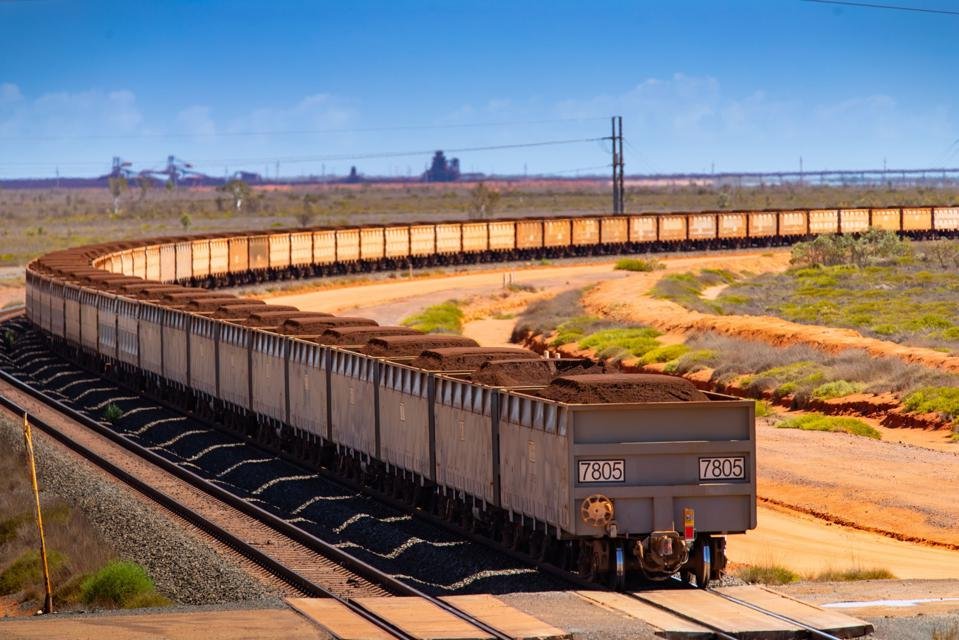Record profits, dividends and share prices reported over the past two days by the world’s top two mining companies, BHP and Rio Tinto, have confirmed the strength of the bull market in commodities.
BHP Group was first cab off the rank when it yesterday reported a 17% rise in profit to $9.75 billion for the half-year to December 31, accompanied with a 55% increase in the interim dividend to $1.01.

A 250 wagon BHP iron ore train heading for Port Hedland in Western Australia. Photographer: Ian … [+]
Investors rushed to buy a slice of the miner which generates the lion’s share of its earnings from iron ore and copper, lifting the price of its Australian listed shares to an all-time high of A$49.32 ($38), comfortably above previous peaks in the boom years of 2008 and 2011.
In London, where BHP is also listed, the company has become the most valuable on the London Stock Exchange, displacing perennial leader, the oil giant Royal Dutch Shell.
Cash Bonanza
Rio Tinto took the mining company cash bonanza to another level earlier today when it reported 13% increase in underlying pre-tax profit for the year to December 31 of $23.9 billion, matched by a record dividend of $5.57 and an all-time share price record of A$127.47 ($98) on the Australian stock market, up A$4.94 on the previous record set in 2008.
Both BHP and Rio Tinto are riding high on Chinese demand for iron ore which is used to make steel being consumed in that country’s stimulus supported building boom
Despite repeated predictions that iron ore is overdue for a fall it continues to trade at a near record $163.30 a ton, more than double the $83/t at this time last year.
A sharply higher prices for copper is also starting to feed its way into the profits of BHP and Rio Tinto with the copper price beaching an eight year high of $3.84 a pound up 83% on last year’s low of $2.10 reached in the early days of the Covid-19 pandemic.

Every reason to smile, BHP’s chief executive Mike Henry: Carla Gottgens/Bloomberg.
BHP chief executive, Mike Henry, said yesterday that his company’s return on capital had risen to 24% with net debt down 7% at $11.8 billion, the lower end of the range set by the board.
“Our outlook for global economic growth and commodity demand remains positive, with policymakers in key economies signalling a durable commitment to growth and signalling ambitions to tackle climate change,” Henry said.
“These factors, combined with population growth and rising living standards, are expected to drive continuing growth in demand for energy, metals and fertilisers.”
He declined to comment on speculation that a new commodity “supercycle” had started, preferring to describe the outlook as “pretty constructive”.
Critics Silenced
Rio Tinto’s relatively new chief executive, Jakob Stausholm, silenced critics of the company with a monster dividend of $5.57 a share, up 26% on last year’s total payout of $4.43.
The consensus of investment bank forecasts was for an annual dividend of $4.80 with the more generous payout possibly a reaction to the bad publicity associated with Rio Tinto’s destruction of an ancient Aboriginal rock shelter in the Juukan Gorge near one of its iron ore mines.
That incident led to the resignation of the company’s previous chief executive and the departure of three senior executives.
Stausholm, in delivering his first profit report described the year as extraordinary with a successful response to the pandemic, and strong safety performance “overshadowed by the tragic events at the Juukan Gorge, which should never have happened.”























